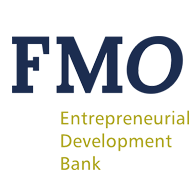


Strengthening collaboration between MDBs and DFIs can act as one of the levers to unlock and scale climate and nature finance.
The Spring Meetings, organized by the World Bank and the International Monetary Fund, bring together bankers, ministers of finance and development, leaders of Multilateral Development Banks (MDBs), Development Finance Institutions (DFIs), and private business executives to address critical issues pertaining to international economic development and climate finance. MDBs are central to the conversation on the global development finance architecture, reform agendas and mobilizing large-scale investments for impact.
Last year, the discussions at the Spring Meetings recognized that MDBs’ reform agendas are moving towards implementation, with key deliverables including mobilizing more climate finance and seeking co-financing opportunities. However, reform processes and capital scaling are not happening at the pace required to achieve global development goals. As this year’s meetings look to drive more finance ahead of COP30, items on the agenda include driving economic prosperity, sustainable development and climate action in constrained fiscal environments. IMF plenaries also focus on global financial stability, economic policies, and the role of the IMF in supporting member countries.
While MDBs also have the ability to mobilize private capital, they are more geared towards supporting public sector initiatives to support growth in developing countries. DFIs, on the other hand, are essential in bridging the gap between private and public capital and can drive significant progress in global development. Despite their differences, MDBs and DFIs are both able to create and grow assets in markets that most international commercial investors are not able to reach, and therefore push for the mobilization of finance in markets traditionally viewed as ‘high risk’, or into emerging asset classes such as nature.
Strengthening collaboration between MDBs and DFIs can act as one of the levers to unlock and scale climate and nature finance and help to advance the reform agendas of MDBs and deliver on shared impact goals. Each DFI and MDB also have a unique identity, and understanding the distinct yet complementary roles of MDBs and DFIs helps in appreciating their contributions to global development and the innovative solutions they bring to the table.
For DFIs and MDBs to work well together, the roles and functions of each entity need to be well understood by the investor community. DFIs are pivotal in driving global development in private markets, however a lack of understanding of their characteristics by the broader investor community can inhibit their true potential in collaboration and scaling finance for nature. Mobilising Finance for Forests’ Learning, Convening and Influencing Platform recently released the ‘Mobilising Finance for Forests and Sustainable Land Use: Demystifying the Role of Development Finance Institutions’ paper, whichaims to set out the different strengths, limitations and the financial tools that DFIs can use to catalyze commercial investment. This paper seeks to enhance the understanding of how DFIs catalyze commercial investment in nature-positive projects, while also explaining the financial tools and mechanisms they use to bridge funding gaps in high-risk sectors. Alongside MDBs, DFIs have a critical opportunity at the Spring Meetings to help drive climate finance and sustainable development agendas ahead of COP30, as well as to highlight the importance of global cooperation to meet shared challenges.
Mobilizing Finance for Forests (MFF) is a blended finance program delivered by FMO and funded by the UK government and the government of the Kingdom of the Netherlands. MFF was established in 2021 to combat deforestation and other environmentally unsustainable land use practices contributing to global climate change.